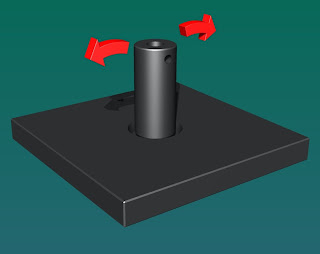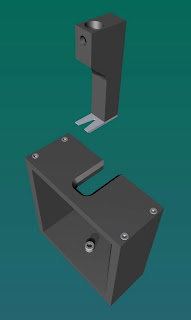It's really nice to be able to show you some pictures of the finished products, rather than renderings. The attachments, once checked, go straight to the customer... (so we don't often get time for pictures). This test is for Bituminous Materials, like tar -or- polymer modified asphalt (depending on you professional inclinations). The ASTM Standard calls for a very precise procedure that includes warming and filling a 3oz. pot with the sample and lowering a semi-sphere into it. This is then extracted and the forces required measured... It's quite a demanding test for the equipment as the sample material is quite, well, sticky... so we've made the parts that would come in contact with the sample out of stainless steel, this should allow the parts to be cleaned without having to worry about affecting any surface finish.




